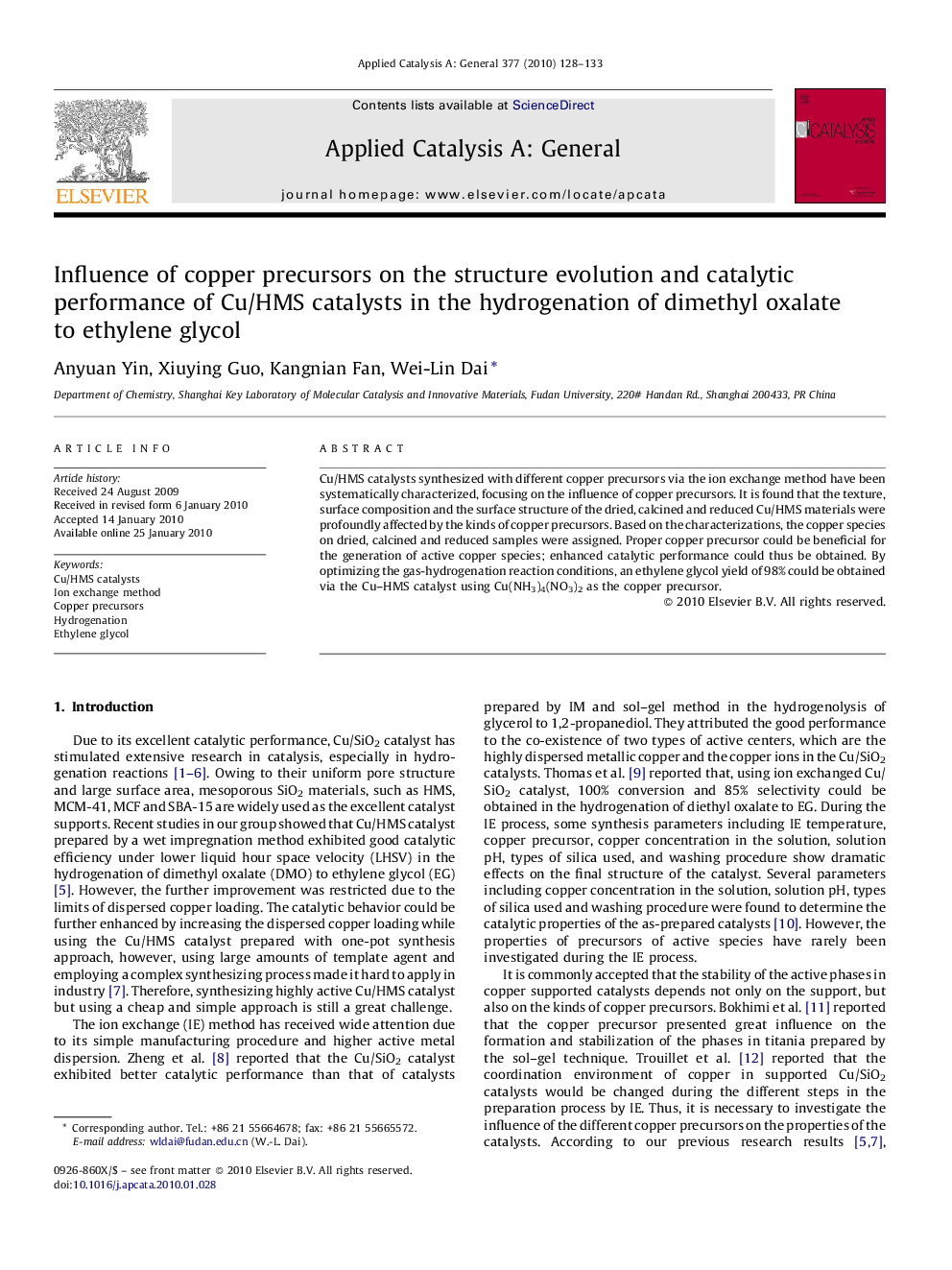| Article ID | Journal | Published Year | Pages | File Type |
|---|---|---|---|---|
| 42350 | Applied Catalysis A: General | 2010 | 6 Pages |
Cu/HMS catalysts synthesized with different copper precursors via the ion exchange method have been systematically characterized, focusing on the influence of copper precursors. It is found that the texture, surface composition and the surface structure of the dried, calcined and reduced Cu/HMS materials were profoundly affected by the kinds of copper precursors. Based on the characterizations, the copper species on dried, calcined and reduced samples were assigned. Proper copper precursor could be beneficial for the generation of active copper species; enhanced catalytic performance could thus be obtained. By optimizing the gas-hydrogenation reaction conditions, an ethylene glycol yield of 98% could be obtained via the Cu–HMS catalyst using Cu(NH3)4(NO3)2 as the copper precursor.
Graphical abstractHigh copper contented Cu–HMS catalyst prepared by an ion exchange method using Cu(NH3)4(NO3)2 as the copper precursor exhibited high ethylene glycol yield (98%) with 100% conversion and 98% selectivity to ethylene glycol in the hydrogenation reaction of dimethyl oxalate under these optimal reaction conditions: 2.5 MPa, 473 K, H2/dimethyl oxalate (mol/mol) = 50, and LHSV = 0.7 h−1.Figure optionsDownload full-size imageDownload high-quality image (161 K)Download as PowerPoint slide
